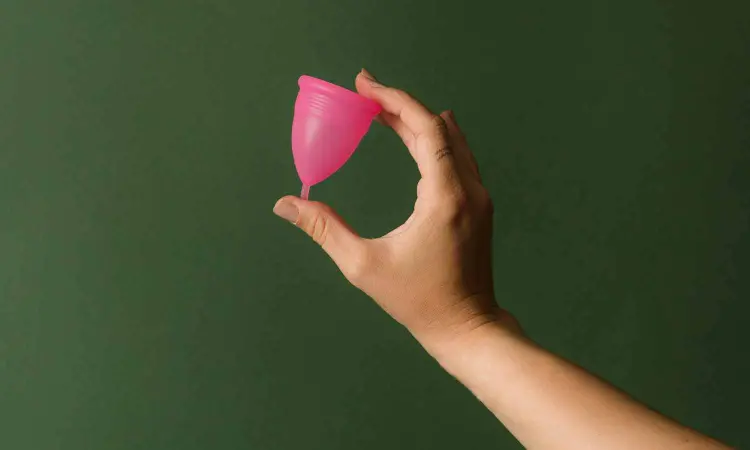- Home
- Medical news & Guidelines
- Anesthesiology
- Cardiology and CTVS
- Critical Care
- Dentistry
- Dermatology
- Diabetes and Endocrinology
- ENT
- Gastroenterology
- Medicine
- Nephrology
- Neurology
- Obstretics-Gynaecology
- Oncology
- Ophthalmology
- Orthopaedics
- Pediatrics-Neonatology
- Psychiatry
- Pulmonology
- Radiology
- Surgery
- Urology
- Laboratory Medicine
- Diet
- Nursing
- Paramedical
- Physiotherapy
- Health news
- Fact Check
- Bone Health Fact Check
- Brain Health Fact Check
- Cancer Related Fact Check
- Child Care Fact Check
- Dental and oral health fact check
- Diabetes and metabolic health fact check
- Diet and Nutrition Fact Check
- Eye and ENT Care Fact Check
- Fitness fact check
- Gut health fact check
- Heart health fact check
- Kidney health fact check
- Medical education fact check
- Men's health fact check
- Respiratory fact check
- Skin and hair care fact check
- Vaccine and Immunization fact check
- Women's health fact check
- AYUSH
- State News
- Andaman and Nicobar Islands
- Andhra Pradesh
- Arunachal Pradesh
- Assam
- Bihar
- Chandigarh
- Chattisgarh
- Dadra and Nagar Haveli
- Daman and Diu
- Delhi
- Goa
- Gujarat
- Haryana
- Himachal Pradesh
- Jammu & Kashmir
- Jharkhand
- Karnataka
- Kerala
- Ladakh
- Lakshadweep
- Madhya Pradesh
- Maharashtra
- Manipur
- Meghalaya
- Mizoram
- Nagaland
- Odisha
- Puducherry
- Punjab
- Rajasthan
- Sikkim
- Tamil Nadu
- Telangana
- Tripura
- Uttar Pradesh
- Uttrakhand
- West Bengal
- Medical Education
- Industry
Menstrual Cup Use Linked to Higher Risk of IUD Displacement: Study

Menstrual cups (MC) are being increasingly used for menstruation management as an alternative to tampons and sanitary pads. Intrauterine devices (IUD) are commonly and increasingly used for birth control.
Displacement of an IUD from the uterine fundus can reduce its efficiency, potentially leading to unwanted pregnancies. Recently, concerns have been raised regarding a possible increase in the risk of IUD displacement, associated to the use of MC.
This study measures the association between MC use and IUD displacement, taking into account the already known risk factors of IUD displacement. Women consulting for follow-up of an IUD in two primary care facilities in Paris were enrolled in the study between March 2020 and May 2021. IUD position was assessed by transvaginal ultrasound. Use of MC and exposition to known risk factors for IUD displacement were assessed by a standardized investigator-administered questionnaire. Frequency of MC use was compared between patients with well-positioned IUD and patients with displaced IUD.
A linear regression model looked for an independent association between MC use and IUD displacement, with respect to known risk factors for IUD displacement. 747 patients were included, out of which 6.8% had a displaced IUD. MC use was reported by 17.0% of patients with a well-positioned IUD versus. 41.2% of patients with a displaced IUD.
After adjustment for known risk factors of IUD displacement, MC use appeared to be significantly and independently associated with IUD displacement (aOR [95CI]: 3.09 [1.56–6.05]). The use of a menstrual cup seems to be an independent risk factor for intrauterine device displacement.
Reference:
Claire, J., Mir, S., Dumortier, I. et al. The use of a menstrual cup as a risk factor for displacement of intrauterine devices: a case-control study. Contracept Reprod Med 10, 33 (2025). https://doi.org/10.1186/s40834-025-00366-3
Dr. Shravani Dali has completed her BDS from Pravara institute of medical sciences, loni. Following which she extensively worked in the healthcare sector for 2+ years. She has been actively involved in writing blogs in field of health and wellness. Currently she is pursuing her Masters of public health-health administration from Tata institute of social sciences. She can be contacted at editorial@medicaldialogues.in.
Dr Kamal Kant Kohli-MBBS, DTCD- a chest specialist with more than 30 years of practice and a flair for writing clinical articles, Dr Kamal Kant Kohli joined Medical Dialogues as a Chief Editor of Medical News. Besides writing articles, as an editor, he proofreads and verifies all the medical content published on Medical Dialogues including those coming from journals, studies,medical conferences,guidelines etc. Email: drkohli@medicaldialogues.in. Contact no. 011-43720751


